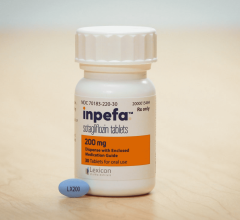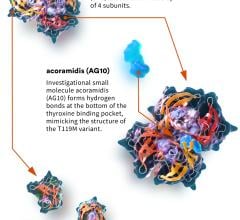
September 6, 2011 — The European Society of Cardiology (ESC) released the latest version of its guidelines for managing patients presenting without persistent ST-segment elevation. This version replaces earlier editions of 2000, 2002 and 2007. The new guidelines also incorporate the findings of very recent studies.
Among the notable new inclusions are recommendations on the use of the new antiplatelet drugs ticagrelor and prasugrel, which only became available in the past two years.
Ticagrelor is recommended for all patients at moderate-to-high risk of ischemic events (including those pre-treated with clopidogrel) and patients with unknown coronary anatomy. Prasugrel is recommended for those who are "clopidogrel naive" in whom coronary anatomy is known and who are proceeding to percutaneous coronary intervention (PCI); prasugrel should be avoided if there is a high risk of life-threatening bleeding or other contraindications. Clopidogrel is reserved for those patients who cannot take either medication.
The guidelines cite the PLATelet inhibition and patient Outcomes (PLATO) and TRITON-TIMI 38 trials as evidence of the superiority of the new drugs over clopidogrel.
There are also notable introductions in the sections on diagnosis. Risk stratification now takes into account the introduction of high-sensitivity troponin assays. These have largely replaced conventional troponin assays because of their higher diagnostic sensitivity. Accordingly, the new guidelines recommend the implementation of a rapid rule-out protocol when these high-sensitivity assays are available. It seems likely the guidelines will change practice in this diagnostic work-up when applying this fast-track protocol.
However, whatever the new introductions, the range of non-ST segment elevation acute coronary syndromes remains as wide and as frequent as ever. The guidelines put annual incidence at three per thousand population, with patients described as a heterogenous group with a variable prognosis. Risk stratification thus remains essential to their management.
The 2011 guidelines recommend use of the Can Rapid risk stratification of Unstable angina patients Suppress ADverse outcomes with Early implementation of the ACC/AHA guidelines (CRUSADE) risk score to estimate the risk of in-hospital bleeding. The score should be used for patients with suspected non-ST-elevation acute coronary syndromes, as bleeding is still acknowledged as a major factor.
“It’s probably the best validated score because it’s based on more than 70,000 patients of the CRUSADE registry and was validated in a cohort of [more than] 17,000 patients,” says task force chairman Prof. Christian Hamm. “So it’s really very solid data.”
Previous guidelines have recommended the GRACE risk score to predict ischemic events. However, says Hamm, the new recommendation to also use the CRUSADE score will enable doctors to tailor treatment according to both risk scores. This, he adds, along with the introduction of high-sensitive troponin assays for diagnosis, are two "practice-changing" recommendations of the new guidelines.
For more information: www.escardio.org


 July 10, 2024
July 10, 2024 








